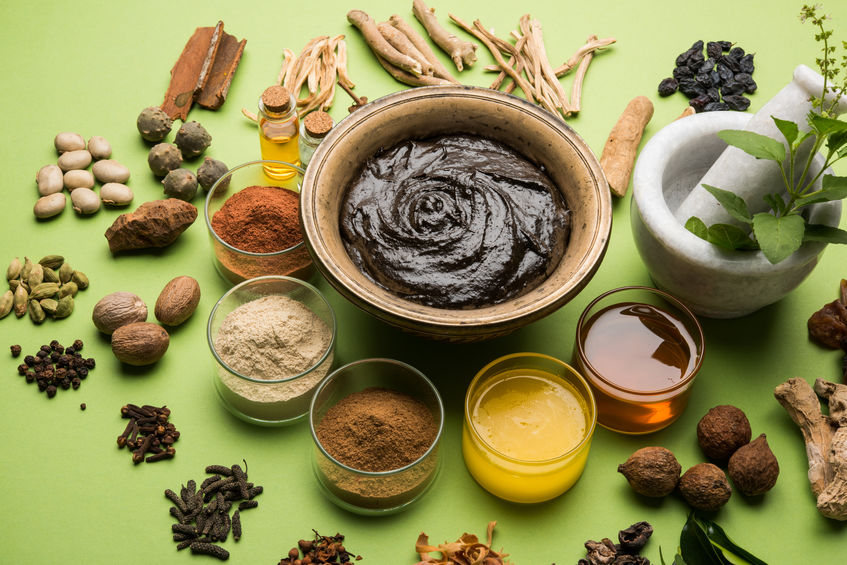
Ayurveda is an ancient science that is comprehensive and holistic when it comes to the health of individuals. The basic principle of Ayurveda is never to just treat the illness for the time being. It takes a deeper approach in going to the root of the issue and curing it from where it emanates rather than just bringing temporary relief. Ayurveda not only has a great inventory of herbs and supplements that are used in various concoctions, it also suggests great lifestyle practices — healthy diet, yoga et cetera — that aid general wellbeing.
It is a known fact that the three Doshas — Vata, Pitta, and Kapha — are the main pillars in every Ayurvedic treatment plan. These three Doshas exist differently in every human being and have varied levels of balance according to body types. Hence, before using Ayurvedic techniques, it is always essential to understand how the Doshas exist in a particular human being. These Doshas are so important that even a slight imbalance can cause the onset of disease.
Ayurveda is an intricate science that helps the functions of the body regain normalcy and a balance by using a host of varied techniques, each with its own merits. This could be as simple as ensuring the right food is eaten or the right amount of exercise is practiced. More complex techniques include: Panchakarma (which is a full body cleansing), to ingesting herbal preparation, or even using surgical methods to help rid different diseases.
According to Ayurveda, the key to a healthy lifestyle is by ensuring the digestive system is strong and functioning at its optimum levels. A normal and well functioning digestion is massively dependent on the digestive fire or Agni, in addition to keeping the Doshas in balance. Agni is dependent on the Sun. When the Sun is at its peak in the sky the Agni is at its strongest. Inefficient digestion produces a metabolic waste called Ama that is the root cause of diseases and degeneration. Using concoctions of different Ayurvedic herbs is proven to help keep the digestive system in perfect working order.
Ayurveda uses natural ingredients not only as medicines to treat diseases but also as supplements to maintain the Dosha balance, good digestion, and relieve toxic buildup in the body. These natural ingredients are fruits, seeds, stems, leaves, roots, salts, oils, and milk to name a few. Many of the Ayurvedic herbal ingredients are found in Indian kitchens. We are familiar with some of them as common home remedies that have been passed on from generation to generation. Knowing more about these wonderful herbs and their role in Ayurveda helps us use them better to maintain good health the Ayurvedic way.Ayurveda is an ancient science that is comprehensive and holistic when it comes to the health of individuals. The basic principle of Ayurveda is never to just treat the illness for the time being. It takes a deeper approach in going to the root of the issue and curing it from where it emanates rather than just bringing temporary relief. Ayurveda not only has a great inventory of herbs and supplements that are used in various concoctions, it also suggests great lifestyle practices — healthy diet, yoga et cetera — that aid general wellbeing.
It is a known fact that the three Doshas — Vata, Pitta, and Kapha — are the main pillars in every Ayurvedic treatment plan. These three Doshas exist differently in every human being and have varied levels of balance according to body types. Hence, before using Ayurvedic techniques, it is always essential to understand how the Doshas exist in a particular human being. These Doshas are so important that even a slight imbalance can cause the onset of disease.
Ayurveda is an intricate science that helps the functions of the body regain normalcy and a balance by using a host of varied techniques, each with its own merits. This could be as simple as ensuring the right food is eaten or the right amount of exercise is practiced. More complex techniques include: Panchakarma (which is a full body cleansing), to ingesting herbal preparation, or even using surgical methods to help rid different diseases.
According to Ayurveda, the key to a healthy lifestyle is by ensuring the digestive system is strong and functioning at its optimum levels. A normal and well functioning digestion is massively dependent on the digestive fire or Agni, in addition to keeping the Doshas in balance. Ayurveda is an ancient science that is comprehensive and holistic when it comes to the health of individuals. The basic principle of Ayurveda is never to just treat the illness for the time being. It takes a deeper approach in going to the root of the issue and curing it from where it emanates rather than just bringing temporary relief. Ayurveda not only has a great inventory of herbs and supplements that are used in various concoctions, it also suggests great lifestyle practices — healthy diet, yoga et cetera — that aid general wellbeing.
It is a known fact that the three Doshas — Vata, Pitta, and Kapha — are the main pillars in every Ayurvedic treatment plan. These three Doshas exist differently in every human being and have varied levels of balance according to body types. Hence, before using Ayurvedic techniques, it is always essential to understand how the Doshas exist in a particular human being. These Doshas are so important that even a slight imbalance can cause the onset of disease.
Ayurveda is an intricate science that helps the functions of the body regain normalcy and a balance by using a host of varied techniques, each with its own merits. This could be as simple as ensuring the right food is eaten or the right amount of exercise is practiced. More complex techniques include: Panchakarma (which is a full body cleansing), to ingesting herbal preparation, or even using surgical methods to help rid different diseases.
According to Ayurveda, the key to a healthy lifestyle is by ensuring the digestive system is strong and functioning at its optimum levels. A normal and well functioning digestion is massively dependent on the digestive fire or Agni, in addition to keeping the Doshas in balance.
Knowledge of the benefits of these herbs that have been used for centuries by our ancestors better enables us to benefit from them. When the actual efficacy and action of a herb are understood we can incorporate more of it into our cooking or diet when required. We can also better understand why a certain herb is a component of prescribed Ayurvedic medicine and help support the action of the herb through our diet and habits. Ayurveda has more to it than just popping a pill or drinking medicine. It is a science that helps us get more in tune with the natural tendencies of our bodies and to harmonise them.
Importance of Ayurvedic herbs
Right from the ancient times, Ayurvedic herbs offered a solution to all kinds of diseases, some of which were considered impossible to treat by other fields of medical sciences. They are derived from a plant source, where the leaves, flowers, fruits, seeds, roots, bark and resin are used to prepare medicines. These herbal medicines have the potential to maintain a balance between the mind and the spirit. Some of the commonly used Ayurvedic herbs and their uses are mentioned as follows.
Ajwain
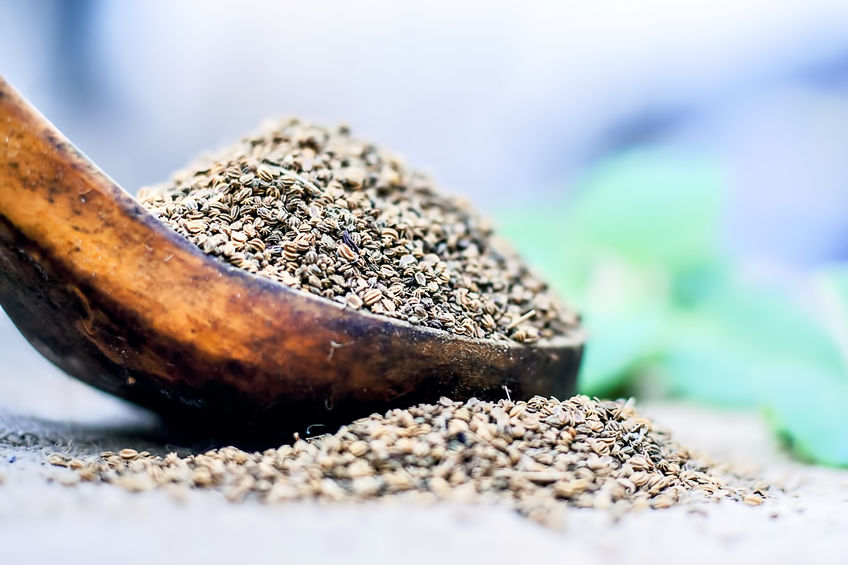
Ajwain or (Trachyspermum ammi) is the humble carom seed that is used as a spice and is the base of many home remedies. It has a very distinctive aroma and taste. Ajwain is a member of the Apiaceae family and is related to carrot, cumin, coriander, anise, asafoetida, etc. Ancient Egyptian civilizations used it as a medicine as well as a culinary spice. In traditional Ayurvedic medicine, it is known to treat asthma, persistent coughs, flatulence, and indigestion.
Benefits of Ajwain –
- Ajwain consists of active compounds, thymol, and carvacrol, that have powerful antibacterial and antifungal properties
- Ayurveda states that this seed ignites the digestive fire Agni.
- It is used to balance the Kapha and Vata Doshas and increases the Pitta Dosha.
- It may lower cholesterol and triglyceride levels and prevent heart diseases
- It can reduce high blood pressure or hypertension
- Ajwain is commonly used as a household remedy for digestive issues and may help fight peptic ulcers
- It is known to prevent coughing and improve airflow
- It is a strong nerve stimulant and effectively draws out deep-seated toxins from the body
Ashwagandha
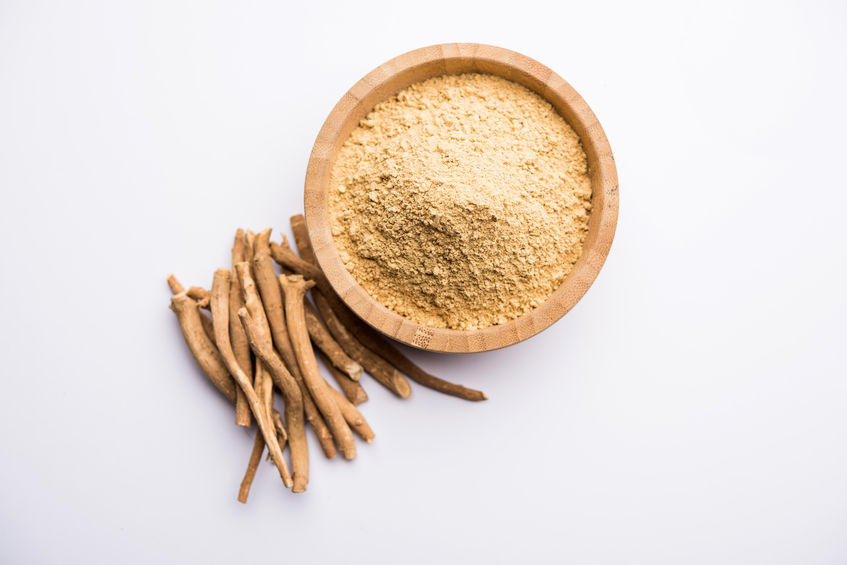
Ashwagandha is highly regarded in the traditional Ayurvedic medicine system. It is a small and woody shrub of the Solanaceae family that is found in India as well as in Africa and a few parts of the Mediterranean continent. Ashwagandha gets its name from two Sanskrit words – Ashva, meaning horse and Gandha meaning smell. Its roots have a strong aroma that is described as “horse-like” and is also said to bestow upon its user the vitality and strength of a horse. The traditional description of being as strong as a horse relates to the description of this herb and its Ayurvedic medicine benefits.
It is commonly used as an adaptogen to help the body cope up with stress and increase its energy and vitality. It also assists the body in preserving and sustaining adequate energy levels throughout the day while promoting restful sleep at night. Traditionally, the roots and berries of the Ashwagandha plant are used for preparing Ayurvedic remedies.
Benefits of Ashwagandha –
- Enhances memory and cognition
- Supports healthy weight management
- Helps maintain normal thyroid
- Helps enhance cardiorespiratory endurance
- Helps maintain healthy testosterone in men
- It offers proper nourishment to the tissues, especially muscle and bone as the body ages
- It helps to maintain a healthy immune system and promote muscle strength to support the comfortable joint movement
- It is considered as the best herb for calming Vata and promoting sexual function in both men and women
Brahmi
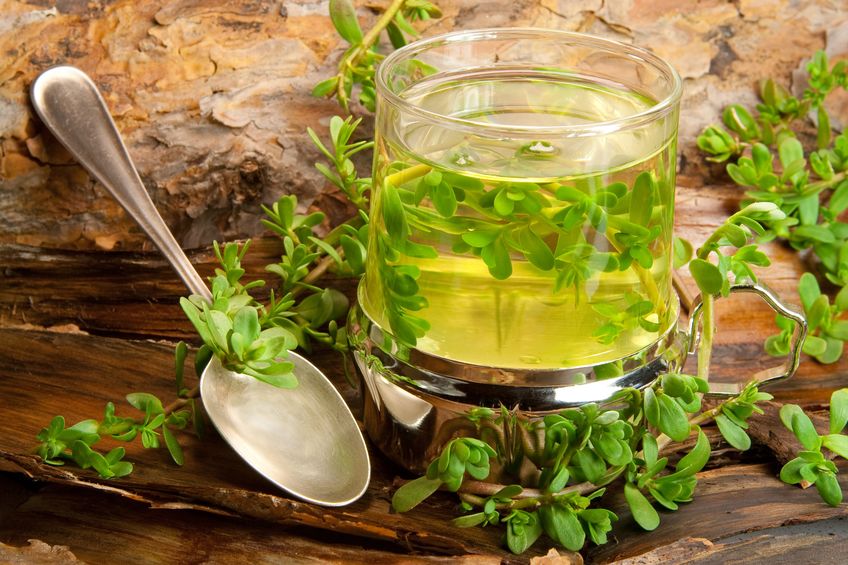
Brahmi also called Bacopa monnieri, herb of grace, thyme-leaved gratiola, is one of the best Ayurvedic herbs that has been in use from ancient times to treat neurological disorders. It can be found in wet and tropical environments and can also be used as an Ayurvedic remedy for improving memory, reducing anxiety and treating epilepsy. Certain researches have pointed out that it may be effective in boosting brain function as well. The leaves of the plant are considered as highly sattvic or pure and were eaten by yogis to assist in meditation in olden times.
Benefits of Brahmi –
- It is a brain tonic that enhances memory, intelligence, and concentration
- Supports proper function of the nervous system
- It decreases the cortisol levels in the body and reduces stress and anxiety
- It is a natural blood purifier and helps support clear, healthy skin, and is good for hair as well
- Brahmi supplements are cooling and relaxing in nature and are an excellent tonic for Pitta people with overactive minds
- The antioxidants in Brahmi are helpful for general well-being and removing free radicals that can mutate into cancer cells
- It calms the Vata in mind and reduces excess Kapha in the body
- It is an Ayurvedic neuroprotective and enhances nerve impulse transmission and strengthens immunity.
- It is one of the top Ayurvedic herbs to help reduce stress.
- As per the principles of Ayurveda, it regulates the stress hormones and has a beneficial effect on cortisol levels.
Cardamom
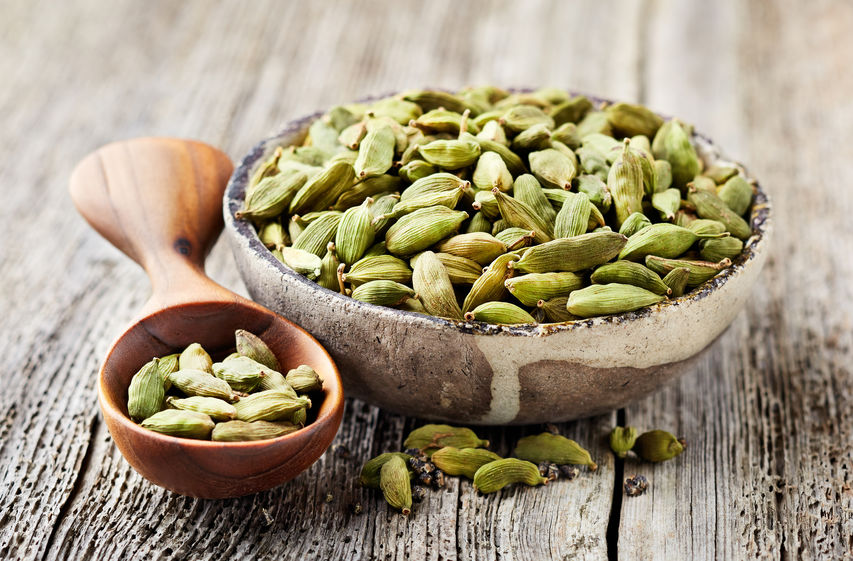
Cardamom is one of the ancient spices of the world. It grows wildly in the Western Ghats of Southern India and in Guatemala, which is the largest producer and exporter of this spice. It has a strong aroma like that of cloves and is used in Indian and Middle Eastern cuisine.
Benefits of Cardamom –
- Cardamom works as a natural tranquilizer
- It is commonly used to treat indigestion, asthma, dysuria, and bad breath
- Due to its antioxidant and diuretic properties, it assists in lowering blood pressure
- It is rich in compounds that protect cells from damage and prevent inflammation
- It can also be used to fight fungal infections and food poisoning
- Cardamom is known to lower blood sugar levels
- It protects the liver by preventing liver enlargement and reducing the risk of fatty liver disease
- Cardamom balances Kapha and Vata Doshas
Cumin
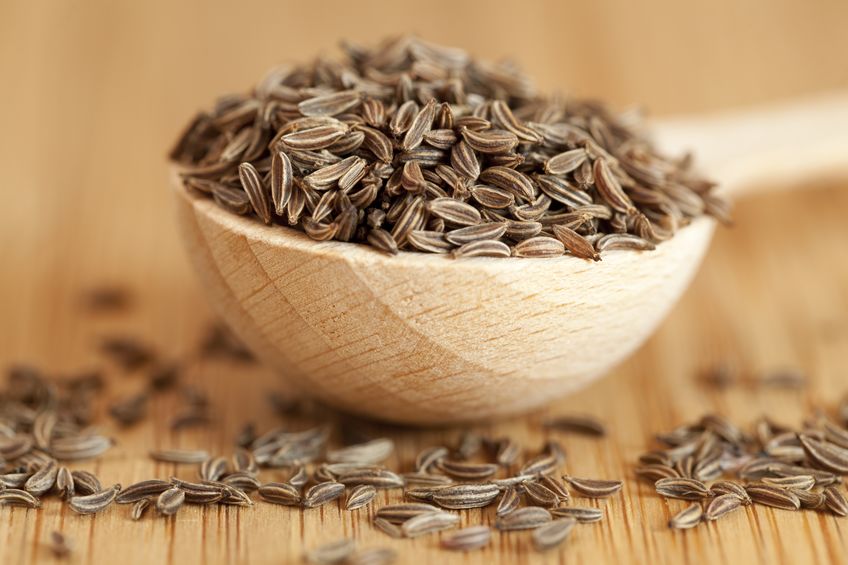
Native to the Mediterranean and Southwest Asia, cumin is a spice that comes from the Cuminum cyminum plant. It is quite popular in many food cultures and is used as whole dried seeds or ground powder, especially in Indian, Mexican, African and Asian cuisine. In the Middle Ages, when spices were relatively rare, cumin was believed to promote love and fidelity. People would carry it in their pockets and bring it to weddings. Apart from this, cumin has been widely used as a medicine to treat different ailments in many parts of the world for many years.
Benefits of Cumin –
- Cumin is one of the best ayurvedic herbs to calm digestive issues. Cumin is beneficial in assisting people to manage their body weight
- Consumption of cumin can increase levels of high-density lipoprotein or good cholesterol
- Its antimicrobial properties reduce the risk of certain foodborne infections
- Studies have shown that people using cumin oil had improvements in signs of insulin resistance. Therefore, cumin is an excellent Ayurvedic herb for diabetes management
- The antioxidants in cumin can stabilize free radicals and prevent inflammation and DNA damage
- Cumin seeds may also help in reducing addictive behaviour and withdrawal symptoms
- It is one of the most preferred Ayurvedic herbs for digestion and metabolism. It also helps the body with nutrient absorption
- Cumin is also a natural anti-inflammatory, antimicrobial, and antioxidant.
Licorice
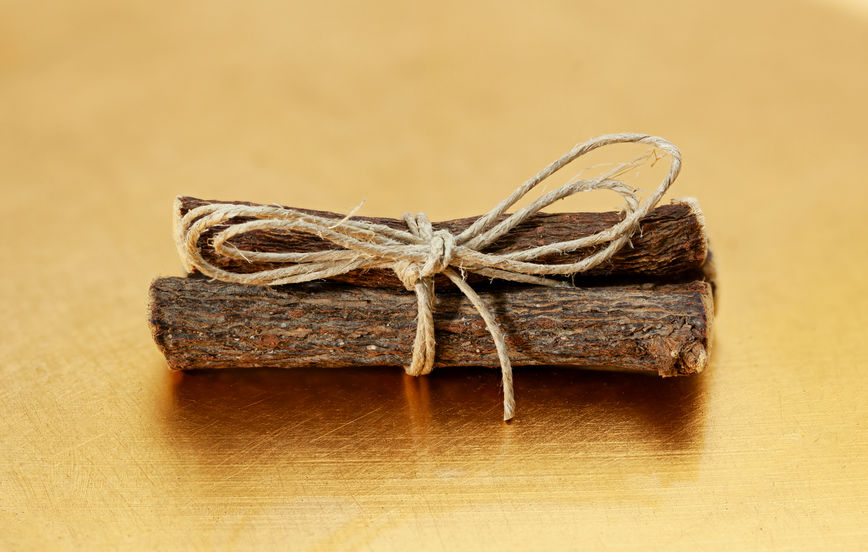
Licorice has been around as a common ingredient in many natural medicines. The ancient Greeks used it for treating cough, and it was also found among the many treasures in the Egyptian pharaoh Tutankhamun’s tomb. Licorice comes from the juice of the roots of the plant Glycyrrhiza Glabra. It is also used as a sweetener in candies and beverages.
Benefits of Licorice –
- Licorice root extract can soothe gastrointestinal problems and provide relief in cases of stomach ulcers, food poisoning, and heartburn
- It contains glycyrrhizic acid, which can subdue the functioning of toxic bacteria, H. pylori and prevent it from growing in the gut
- It can be taken as an oral supplement to enhance the body’s production of healthy mucus for the proper functioning of the respiratory system
- It is found to have a soothing effect on the throat and is used in formulations for a sore or hoarse throat.
- Licorice supplements can offer relief to the adrenal gland that has been exhausted by constantly producing adrenaline and cortisol
- It is a multipurpose ingredient helpful Ayurvedic medicine as an anti-inflammatory, anti-ageing, antioxidant, anti-bacterial, anti-arthritic, analgesic, and antacid.
- Due to its antibacterial properties, licorice can be used in topical gels to treat eczema
- It pacifies the Pitta and Vata Doshas.
- Its beneficial effect on both testosterone and estrogen makes it useful in the Ayurvedic treatment of prostate troubles as well as menopause issues.
Manjistha
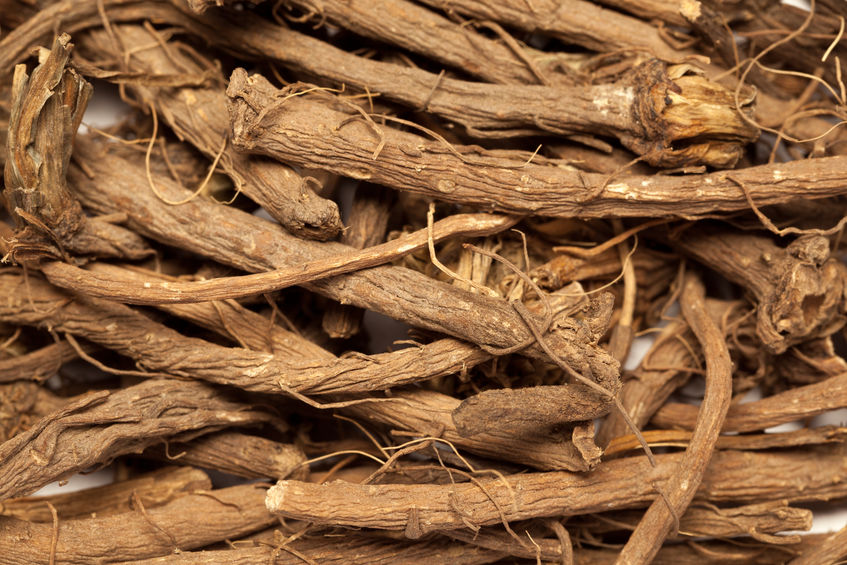
Manjistha is a perennial climber that detoxifies the body by purifying the lymph and blood. The lymphatic system drains out wastes from the body and regulates the immune system. As lymph is pumped through muscle contractions, sedentary lifestyles may result in improper functioning of the lymphatic system giving rise to increased toxic levels in skin, joints, muscles and other tissues. Manjistha is a potent lymph mover that calms aggravated Pitta and breaks up congested Kapha. Many pitta-aggravated imbalances in the body, especially the ones related to the blood, may be supported by Manjistha. It is an effective Ayurvedic medicine to clean the liver, regulate kidney functions and clear acne. It is one of the most popular Ayurvedic ingredients used in traditional medicines to improve the complexion and voice. It is also used in Ayurveda to ease the symptoms of skin problems, blood sugar issues, ear pain, eye pain, inflammatory problems, urinary tract, and gynaecological disorders.
Neem

The word “Neem” is derived from the Sanskrit Nimba – which means the bestower of good health. Through the ages, the neem tree has been revered by Indians for its miraculous healing powers. Its medicinal properties are well documented in ancient Sanskrit texts, and it’s estimated that it is used in one form or another in almost 75% of Ayurvedic compositions. All the different parts of this tree are used in traditional folk medicine and Ayurveda.
Benefits of Neem –
- Neem leaves have antiseptic, antibacterial, and antifungal properties. Unlike its synthetic equivalents, neem is gentle and doesn’t produce side effects such as allergies and rashes
- It is a potent blood purifier and detoxifier and works well to treat acne, eczema, skin diseases, skin damage, and wounds. It is extremely useful for alleviating Pitta disorders as well
- Consumption of neem tea helps to reduce fever, particularly malaria fever
- The twigs of the neem tree can be used to maintain proper dental hygiene and care
- Neem paste is used as a natural hair conditioner. It strengthens hair roots and promotes healthy hair growth. The bark and leaves of the Neem tree are used as an Ayurvedic blood purifier, to prevent vomiting, nausea, and fever. The leaves have a carminative effect. The neem flowers are used in home remedies for stomach disorders.
Shatavari
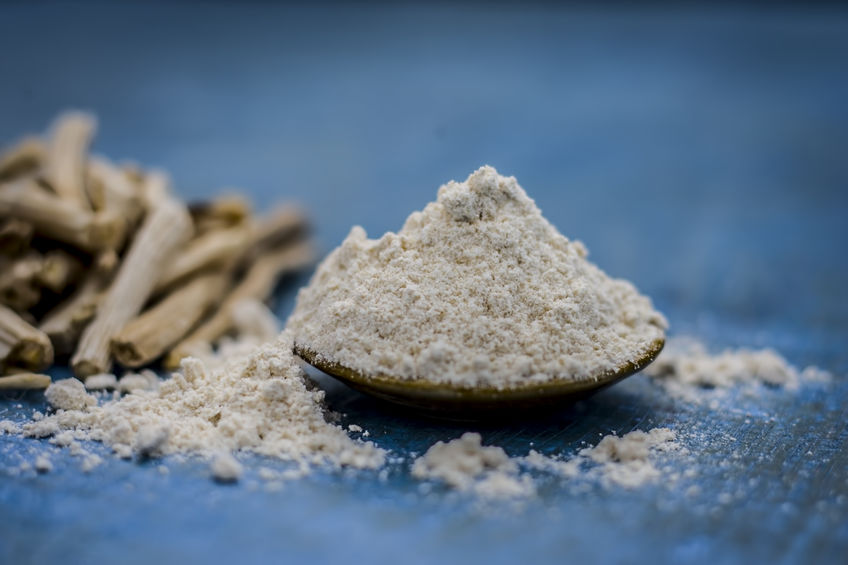
Shatavari or Asparagus racemosus is an adaptogenic herb that promotes fertility and offers a myriad of health benefits, particularly for the female reproductive system. Shatavari is called the queen of herbs. It is high in saponins, compounds with antioxidant abilities.
Benefits of Shatavari –
- It is useful in Ayurveda as a nutritive tonic, diuretic, laxative, antitumor, aphrodisiac, anti-depressant, adaptogenic, rejuvenative, antacid, antispasmodic, antioxidant, demulcent, galactagogue, anti-microbial, and immunomodulator.
- Shatavari can reduce inflammation in the body without causing any serious digestive side effects
- It helps in enhancing immunity
- Shatavari root juice is known to be effective in alleviating cough
- It may be suggested as a diuretic to help the body get rid of excess fluid
- Helps in the treatment of stomach, intestine or esophagus ulcers
- It may help maintain blood sugar
- The antioxidants in Shatavari reduce the free radicals that lead to skin damage and wrinkles. It may also help in preventing collagen breakdown and maintaining the skin’s elasticity
Turmeric

Turmeric is one of the most popular and widely researched Ayurvedic spices in the world. It is native to South Asia, particularly India, but is also cultivated in other warm regions of the world. The Latin name for turmeric is “Curcuma longa”, derived from “Kurkum”, which is the Arabic name of the plant.
Turmeric, belonging to the Zingiberaceae family, goes by many names in Sanskrit, such as Kanchani or the Golden Goddess, Haridra, or the yellow one, Gauri, or the one who has a shining face. It is used in Ayurveda for its properties of being an excellent detoxifier, anti-microbial, immunomodulator, liver function regulator, anti-arthritic, antioxidant, and anti-diabetes. It is no wonder then that most Indian savoury recipes call for a pinch of turmeric as a matter of course.
Benefits of Turmeric –
- Turmeric purifies the blood and channels of the body. It enhances the complexion of the skin and circulating blood and nutrients to the skin. It is one of the Indian herbs used extensively in traditional beauty regimens to maintain healthy skin and discourage body hair growth.
- It consists of compounds that help preserve brain function
- As it is anti-inflammatory, it works well to treat acne-prone skin
- It balances Pitta because of its blood and liver cleansing properties
- It helps to maintain healthy blood sugar levels
- Strengthens the immune system
Haritaki
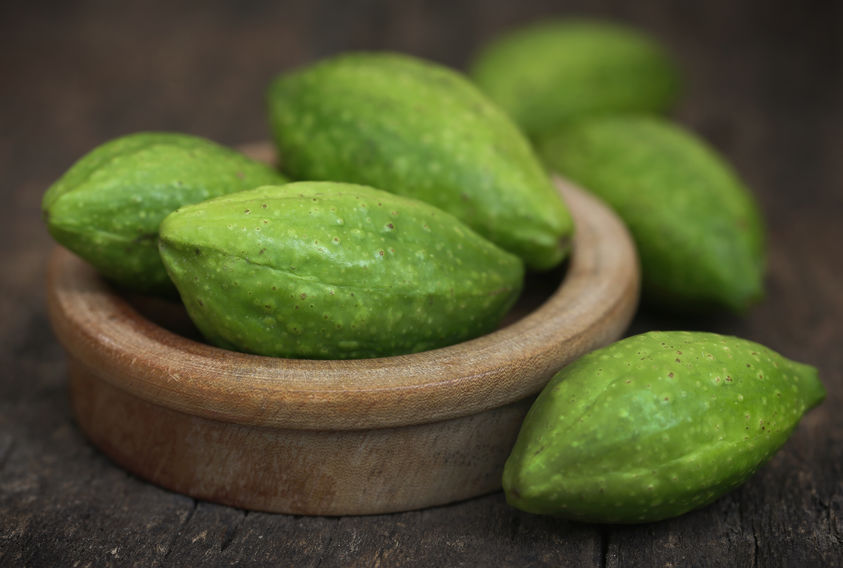
The translation of the word Haritaki is that which removes diseases and makes the body shine. Historically, the use of Haritaki for healing and higher consciousness of mind for thousands of years has been documented in India, Nepal, Thailand, and many other regions of southeast Asia. Due to its potential to increase energy, intelligence, and awareness, it was referred to as the “King of Herbs” in the Ayurvedic and Siddha healing systems of India. It is well known for being one of the Triphala herbs.
Haritaki was so popular in the Buddhist culture that it was referred to as “The Supreme Nectar That Illuminates the Mind”. The dried fruit of the tree is used for medicinal purposes. Haritaki has a bitter taste and is rich in vitamin C and substances with antioxidant and anti-inflammatory properties. Haritaki is used in Ayurveda as a natural anti-viral, anti-fungal, antimicrobial, hepatoprotective, cardioprotective, anti-bacterial, hypolipidemic, antioxidant, immunomodulator, anti-diabetes, hypolipidemic and wound healer.
Benefits of Haritaki –
- Haritaki supports and enhances the vital functions of the body, such as strong digestive fire, adequate nutrient absorption, healthy waste elimination, etc.
- Although it is well-known as a quintessential Vata-balancing herb, it is effective in pacifying all the three Doshas
- It is useful in Ayurvedic formulations to help improve the complexion, detoxify, ease bowel movement, as a rejuvenative, aid to memory and intelligence, improve digestion, and as a fat scraper.
- It may help to reduce cholesterol levels in the body
- It prevents lung infections in individuals with cystic fibrosis
- It is beneficial in neuro-muscular weakness and diminished vision
- Haritaki is used in Ayurvedic formulations for eye problems, sore throat, obesity, burns, leucoderma, bleeding gums, caries, cough, tuberculosis, prolapsed uterus, and stomach problems such as dysentery.
- Haritaki is used in formulations to promote a healthy digestive system and support the liver and kidneys. Haritaki is particularly useful in folk treatments for piles and haemorrhoids as it eases the elimination of the bowel contents and helps relieve the pressure on piles affected areas. It is also a natural anti-inflammatory that helps the affected areas to heal.
- It bolsters heart health and protects against blood disorders
- Haritaki is used in traditional natural hair dyes.
- It should be avoided during pregnancy.
Guduchi

Guduchi or Tinospora cordifolia is one of the highly revered herbs in Ayurveda for its rejuvenating, detoxifying, immune-boosting, and anti-rheumatic properties. The name “Guduchi” means the one who protects. Originating in India, the herb can also be found in Sri Lanka and Burma.
According to Ayurveda, guduchi is considered to be one of the three amrit (nectar or ambrosia) plants, the other two being garlic and haritaki. Generally, the roots, stem, and leaves of the guduchi plant are used for medicinal purposes, but the bitter starch of the plant holds the most importance.
Benefits of Guduchi –
- This herb is vital to many important Ayurvedic medicine formulations. It is used in Ayurveda as an adaptogen and for anti-stress. When there is a Dosha or Dhatu that is imbalanced at less than optimum levels this herb restores it. When there is an aggravated or increased level of a Dosha or Dhatu, it brings the level down to normal.
- It is used in traditional medicine for its properties of being an immunomodulator, rejuvenating, anti-inflammatory, digestive, hypoglycemic, anti-constipation, antacid, analgesic, antioxidant, antimutagenic, gastrointestinal protective, detoxifier and hematogenic.
- Guduchi is quite effective in the treatment of digestive ailments, such as hyperacidity, colitis, abdominal pain, appetite loss and liver ailments like hepatitis.
- The starch of the plant can be used as a home remedy for treating chronic fever while enhancing appetite and energy.
- It can help in reducing the levels of blood urea and get rid of renal calculi.
- It can be used in combination with sunthi for the treatment of gout and rheumatic ailments. Santhwanam oil by Kerala Ayurveda can be quite effective in the treatment of rheumatic conditions.
- Diabetes can be managed by the mixture of guduchi, nimba and vasa. You can also try out the Glymin tablet with proper consultation for the management of diabetes, kidney and heart problems in the Ayurvedic way
- It is a restorative herb that reduces oxidative stress in humans
- It promotes a healthy inflammatory response and reduces excess Pitta in the body
Amalaki
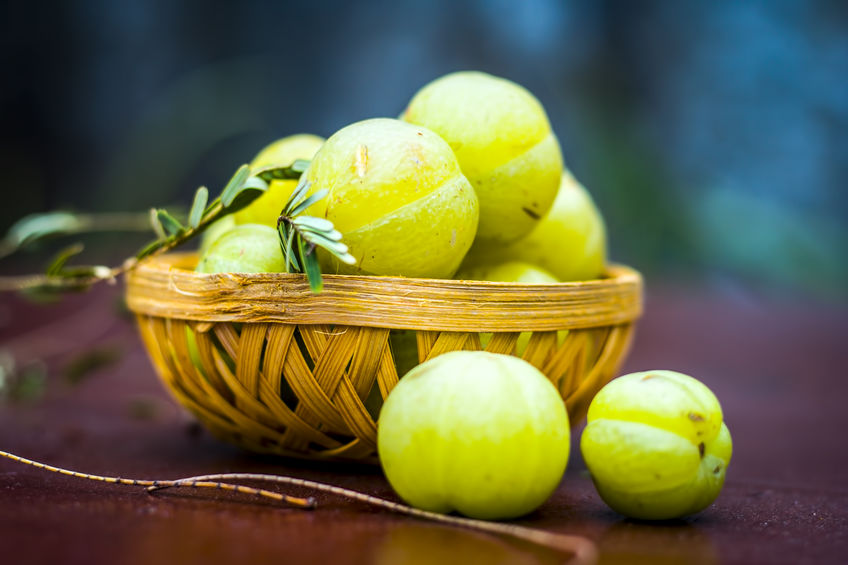
Amalaki is considered as a powerful rejuvenating herb in Ayurveda. It is commonly known as Indian gooseberry or amla, and is used as an Ayurvedic herb for hair growth and to boost the immune system of the body. Amalaki is native to tropical Southeastern Asia and can be found in different regions of India, Sri Lanka, Pakistan, Malaysia, and the Mascarene Islands. In Sanskrit, Amalaki means “the sustainer”.
Benefits of Amalaki –
- Amlaki has rich antioxidant content and promotes detoxification. As one of the three ingredients in Triphala, it nourishes the tissues and eliminates toxins
- Its cooling action is helpful to pacify excess Pitta in the gastrointestinal tract, thereby supporting a healthy stomach lining and proper functioning of digestive acids. Moreover, it also cleans the colon and promotes healthy bowel movements
- It acts as a brain tonic and is the best Ayurvedic herb for memory and concentration
- It stimulates digestive fire without aggravating Pitta
- It strengthens the nervous system, enhances the health of sensory organs and supports the liver and uterus
- Amalaki is used in Ayurvedic herbal hair oils for healthy hair.
- It also works wonders to promote healthy eyes, nails, and skin.
- It builds Ojas to support a healthy immune response and youthfulness.
- By stimulating microcirculation, Amla builds Ojas to promote healthy blood sugar levels and balance Pitta
Aloe Vera
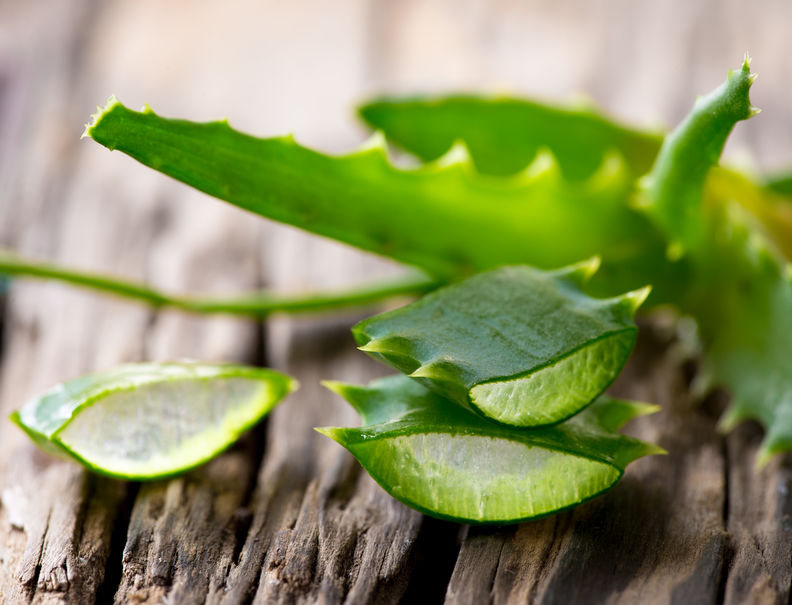
Aloe Vera or Ghrita Kumara in Sanskrit was considered as the “plant of immortality” by the Egyptians. Aloe was recognized in ancient Indian, Greek, Chinese and Roman civilizations for its anti-inflammatory and antibacterial properties.
Benefits of Aloe Vera –
- It is used in Ayurveda as an anti-inflammatory and antibacterial. It supports digestion, heart health, healthy blood sugar levels, normal menstruation, blood purification as well as alleviating hair skin and eye issues.
- Aloe vera juice helps in digestion and absorption of nutrients
- It maintains blood sugar level, increases energy production and promotes cardiovascular health
- It supports smooth menstruation
- It is a bitter tonic that has a mild laxative effect
- It helps to purify the blood
- It is used to treat many skin conditions and hair problems
- It offers relief from non-cystic acne and bloodshot eyes
Guggulu
Guggulu or Commiphora mukul is a potent purifying herb, which comes from the flowering Mukul myrrh tree found in arid climates in India. Ancient Ayurvedic texts have mentions of Guggulu as a purifying herb that protects from diseases. For thousands of years, it has been in use to cure sinuses, treat obesity, soothe inflamed joints and relieve chronic skin disorders. It is also prescribed as a recommended treatment for the obstruction of channels caused due to lack of exercise and excessive consumption of fatty foods.
Benefits of Guggulu –
- The herb is known to cleanse unhealthy tissues and increase the white blood cell count within the body
- It is beneficial for any condition characterized by congestion and stagnation
- It promotes detoxification and rejuvenation
- The resin of this tree balances the body’s Kapha Dosha.
- It has the potential to carry other herbs deep into the tissues
- It assists in the maintenance of healthy cholesterol levels and weight management
- It supports healthy muscle and nerve tissues and promotes the comfortable movement of the joints
- It helps to maintain bone porosity in old age. For the treatment of osteoarthritis naturally, you can go for GT Capsule by Kerala Ayurveda. It consists of a potent form of herbs like guggulu, neem, guduchi, patola, vasa among many others to fight cervical and lumbar spondylosis and other degenerative diseases as well
- Guggulu is one of the best Ayurvedic supplements for people who have accumulated toxins in their body due to stress or serious illness
- Its purifying properties help people recover from drug or alcohol addiction
- It can also be used in mouthwash to treat canker sores and gingivitis
Triphala
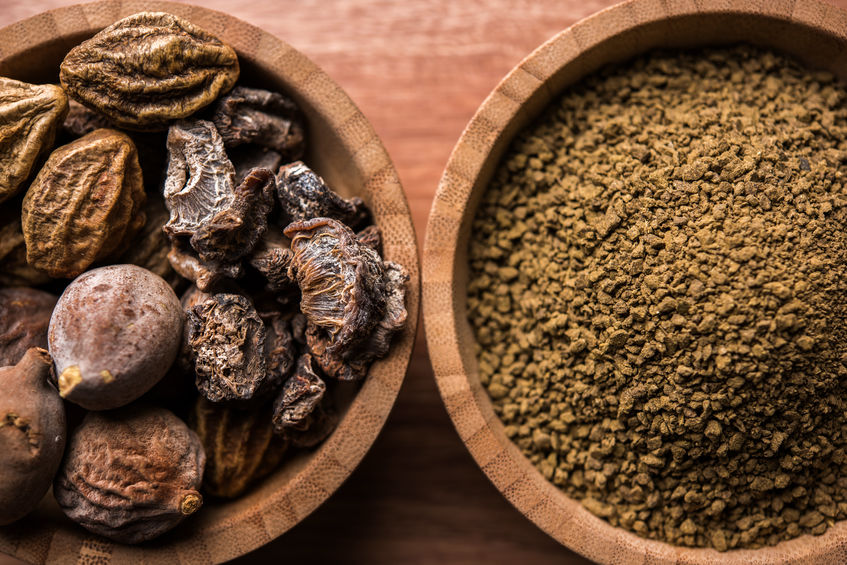
Triphala is an Ayurvedic medicine composed of three medicinal fruits, namely amla (Emblica officinalis), bibhitaki (Terminalia bellirica), and haritaki (Terminalia chebula). It has been an important part of Ayurvedic practice for thousands of years. Its uses have been mentioned in the Sushrut Samhita, which dates back to 1500 BC.
Benefits of Triphala –
- Triphala is an excellent digestive tonic that improves the digestion process and cleanses the digestive tract
- It is a natural laxative that helps to reduce constipation, flatulence, abdominal pain while improving the consistency of bowel movements
- It may reduce the inflammation caused by arthritis and prevent the growth of certain types of cancer
- As Triphala improves metabolism, it is good for weight loss and management
- It is known to fight fatigue and lethargy and boost the energy levels of the body
- Triphala is rich in antioxidants that help fight free radicals and oxidative stress
- Dermatological problems like acne and eczema can also be treated with Triphala
- It consists of many nutrients that preserve the health and beauty of hair and skin
- Pure Triphala blended with musta, lashuna, yashtimadhu, maricha, and pippali can be found in Alsactil herbal tablets that work naturally to provide relief from hyperacidity, flatulence, gastric ulcer, heartburn, etc.
FAQ’s
1. What is the best herb for the brain?
Of the various Ayurveda herbs, the most helpful herb for the brain is Brahmi. This herb has been used for centuries to help maintain memory power and to help enhance brain functioning. Brahmi is helpful in Alzheimer’s disease, ADHD, allergic conditions, anxiety, and irritable bowel syndrome as well. There is a similar herb known as Gotu Kola, which is known as MandukaParni. Brahmi has a helpful positive functioning on the working of the nervous system. It acts as a helpful nerve tonic and is used to help strengthen nerve functioning. It helps improve intellect, it can help improve concentration and memory and help enhance cognitive skills.
2.What Herb gives energy?
One of the most helpful Ayurvedic herbs that can give energy is Ashwagandha. This herb is commonly referred to as Indian ginseng as it is used to help improve vitality and vigor. It is named so as it is believed to help give strength like that of a horse. This is one of the most well-known herbs used in Ayurveda to help improve stamina and energy. Anyone who lacks energy feels listless, and is stressed can use this helpful herb. There are many popular Ayurvedic supplements prepared using this herb. It helps to relax the mind, helps reduce stress, helping in getting a good night’s sleep, and helps restore energy. It is prepared using the root of the plant.
3. Which herb improves memory?
A popular Ayurvedic herb that helps improve memory power is Shankhpushpi. This is very helpful in improving power. It has a helpful effect on the brain. It helps to improve concentration power and helps improve the functioning of the brain. This helps in ensuring memory power is improved. It is used to prepare various products that help boost memory. It is one of the most popular herbs that is prescribed for students who need to help improve memory power to do well in exams.
4. Is ginger good for hypertension?
It is a known fact that the spices we use for cooking have a helpful positive impact on our health. One of the common spices is ginger. It is well-known that ginger is helpful in digestion and helps manage problems like acidity. Ginger helps to fight germs, inflammation, and cancer-causing molecules. It is believed that ginger has alkaloids that help in reducing cholesterol levels. This ensures that blood clots are not formed in the blood vessels. This helps in reducing hypertension and helps to ensure blood pressure levels are stable. This is why ginger should be used for cooking. Ginger is also used in preparing Ayurvedic supplements that can help reduce hypertension.
5. What are the 5 worst foods for memory?
There are certain foods that are bad for memory. They can affect brain functioning and thus have a negative impact on memory. People who have weak memory or nervous diseases should strictly avoid these foods. The five worst foods for memory are:
- Foods with excess sugar like sugary beverages, milkshakes, desserts.
- Processed food made from maida is bad as it causes sugar spikes that can send toxins to the brain.
- Food having trans-fats like ready-to-eat snacks and food made in hydrogenated vegetable oil.
- Artificial sweeteners like aspartame used as a sugar alternative.
- Seafood, since it contains mercury.
Reference – http://www.keralaayurveda.biz/blog/guide-to-the-most-used-ayurvedic-herbs-and-their-benefits